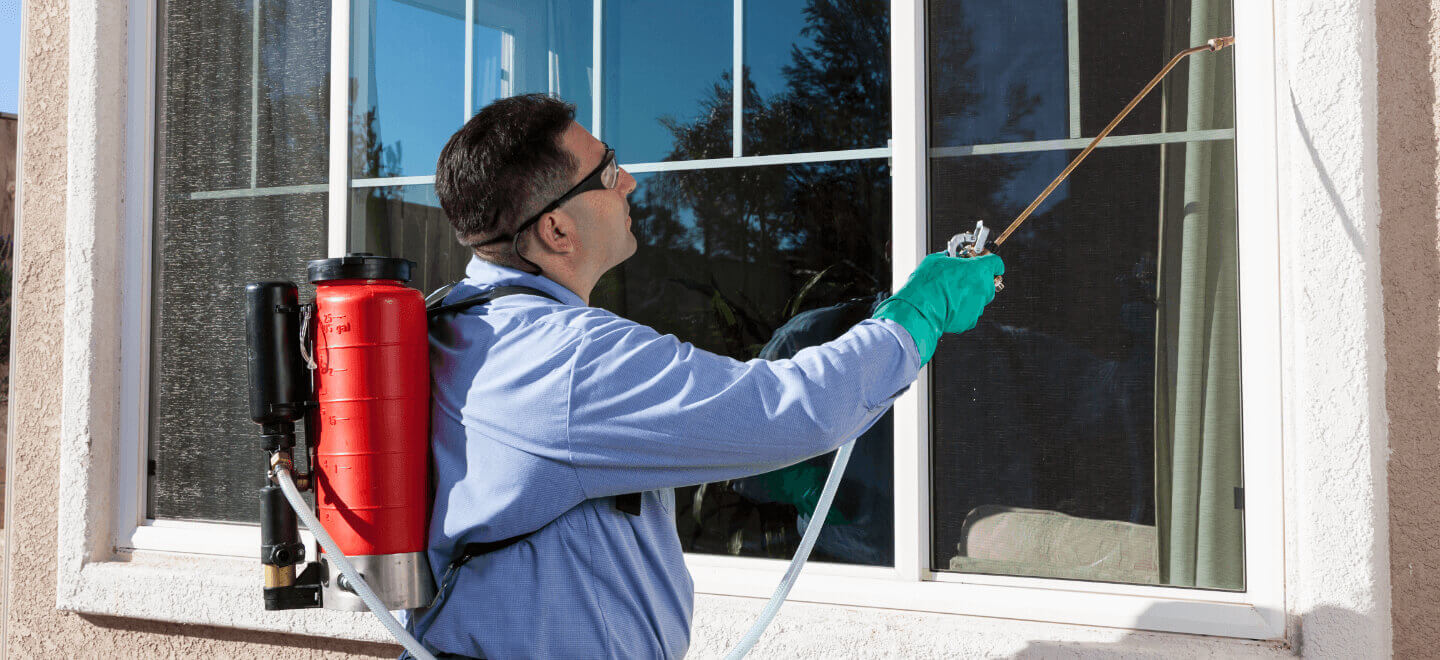A1 Bed Bug Exterminator Charlotte - Efficient and Economical Services
A1 Bed Bug Exterminator Charlotte - Efficient and Economical Services
Blog Article
Bed Pest Treatment Malfunction: Contrasting Chemical Vs. Non-Chemical Solutions
In the world of insect control, specifically when handling the consistent problem of bed bugs, the option in between chemical and non-chemical therapy remedies can be a critical one. Both strategies offer unique benefits and disadvantages, affecting variables such as effectiveness, security factors to consider, and overall expense. By examining the nuanced details of each method, a clearer understanding of which course to pursue in attending to a bed insect infestation can be achieved.
Efficiency of Chemical Therapies
Chemical therapies for bed insect problems have actually been extensively recognized for their quick and powerful efficiency in eradicating these pests. When taking into consideration the performance of chemical therapies, it is essential to recognize that they can provide a complete and fast option to a bed insect issue. Expert pest control operators commonly count on pesticides to target bed bugs at different stages of their life cycle, consisting of grownups, nymphs, and eggs. These chemicals commonly function by interfering with the bed bugs' nerves, resulting in paralysis and ultimate death.
Furthermore, chemical treatments have the advantage of offering residual results, indicating that they can continue to get rid of bed bugs also after the initial application. This residual activity is especially useful in combating any type of potential re-infestations. Additionally, the quick action of chemical therapies can bring relief to individuals facing extreme bed bug invasions, allowing them to regain control of their home quickly.
Safety And Security Interest In Chemical Solutions
One essential element that needs cautious consideration when using chemical remedies for bed pest therapy is making certain the safety and security of occupants and the environment. While chemical therapies can be efficient in eradicating bed bugs, they may position risks if not taken care of appropriately. Among the main safety worries with chemical remedies is the possible harm they can trigger to human wellness. Direct exposure to specific chemicals utilized in bed bug treatments can cause respiratory concerns, skin irritation, or other adverse reactions, specifically in individuals with pre-existing problems or sensitivities. Furthermore, inappropriate application or dosage of chemical pesticides can result in poisonous deposits sticking around in the treated area, posing lasting wellness dangers to residents.
Furthermore, the ecological impact of chemical remedies is another considerable factor to consider. Some chemicals utilized in bed pest treatments might be hazardous to valuable insects, wild animals, and ecological communities if they leach into the soil or water supply. It is important to make use of chemical therapies deliberately, following safety and security guidelines, and taking into consideration much less harmful alternatives to alleviate these threats and ensure the risk-free and effective management of bed insect invasions.
Benefits of Non-Chemical Methods
Considering the potential safety concerns and ecological impact associated with chemical options for bed bug therapy, checking out non-chemical strategies provides an encouraging choice with numerous unique advantages. Non-chemical browse this site therapies are ecologically pleasant, as they do not add to air or water pollution, making them a sustainable selection for insect control.
Furthermore, non-chemical remedies can be reliable in targeting bed insects, including hard-to-reach locations where chemical therapies may not penetrate - A1 pest control services charlotte. Methods such as warmth therapy, vacuuming, steam cleaning, and bed mattress coverings offer thorough elimination without the use of dangerous chemicals.
Limitations of Non-Chemical Treatments

Furthermore, non-chemical treatments usually require numerous applications to attain effective obliteration. This can be time-consuming and may not always ensure complete removal of all bed insects and their eggs, specifically in hard-to-reach or covert areas.
In addition, the success of non-chemical therapies heavily counts on appropriate execution and thoroughness, which can be testing for individuals without expert knowledge. Inadequate application of non-chemical methods may lead to insufficient removal, causing relentless infestations and the need for additional therapies.
For that reason, while non-chemical therapies have their advantages, it is important to acknowledge these constraints and consider them when figuring out the most efficient method for handling bed pest problems.
Expense Comparison: Chemical Vs. Non-Chemical Options
Offered the limitations associated with non-chemical treatments, an important element to examine in the context of bed insect administration is the price contrast in between chemical and non-chemical choices. Chemical treatments normally involve the application more tips here of pesticides by experts, which can range from $250 to $900 per area, depending upon the seriousness of the problem and the size of the location to be treated. On the other hand, non-chemical therapies like warmth therapy or vapor can be more expensive, with prices varying from $1,000 to $6,000 for an entire home. While the initial expense of chemical treatments might appear lower, multiple therapies might be called for to totally get rid of the invasion, possibly raising the total expense. On the other hand, non-chemical alternatives may supply a much more lasting and green service, although they can be cost-prohibitive for some people. Eventually, when thinking about the cost of bed insect treatment options, it is necessary to evaluate the upfront costs against the effectiveness and long-lasting sustainability of the chosen technique.
Verdict

Taking into consideration the potential safety and security issues and ecological impact connected with chemical remedies for bed bug therapy, exploring non-chemical techniques offers a promising option with numerous distinct benefits.Offered the constraints associated with non-chemical treatments, a crucial element to review in the context of bed bug administration is the expense contrast between chemical and non-chemical choices. In comparison, non-chemical therapies like warmth therapy or steam can be much more pricey, with prices varying from $1,000 to $6,000 for an entire home. While the initial expense of chemical treatments might appear reduced, numerous therapies may be called for to fully eliminate the invasion, potentially enhancing the general price.In conclusion, when comparing chemical and non-chemical bed bug treatment options, it is vital to take into consideration effectiveness, security, benefits, restrictions, and expense.
Report this page